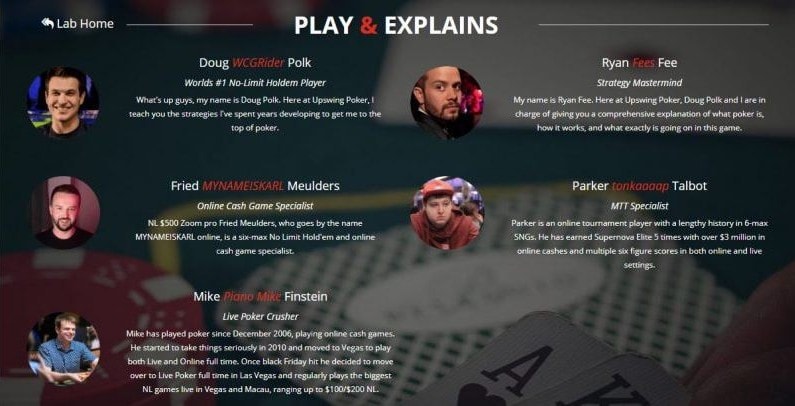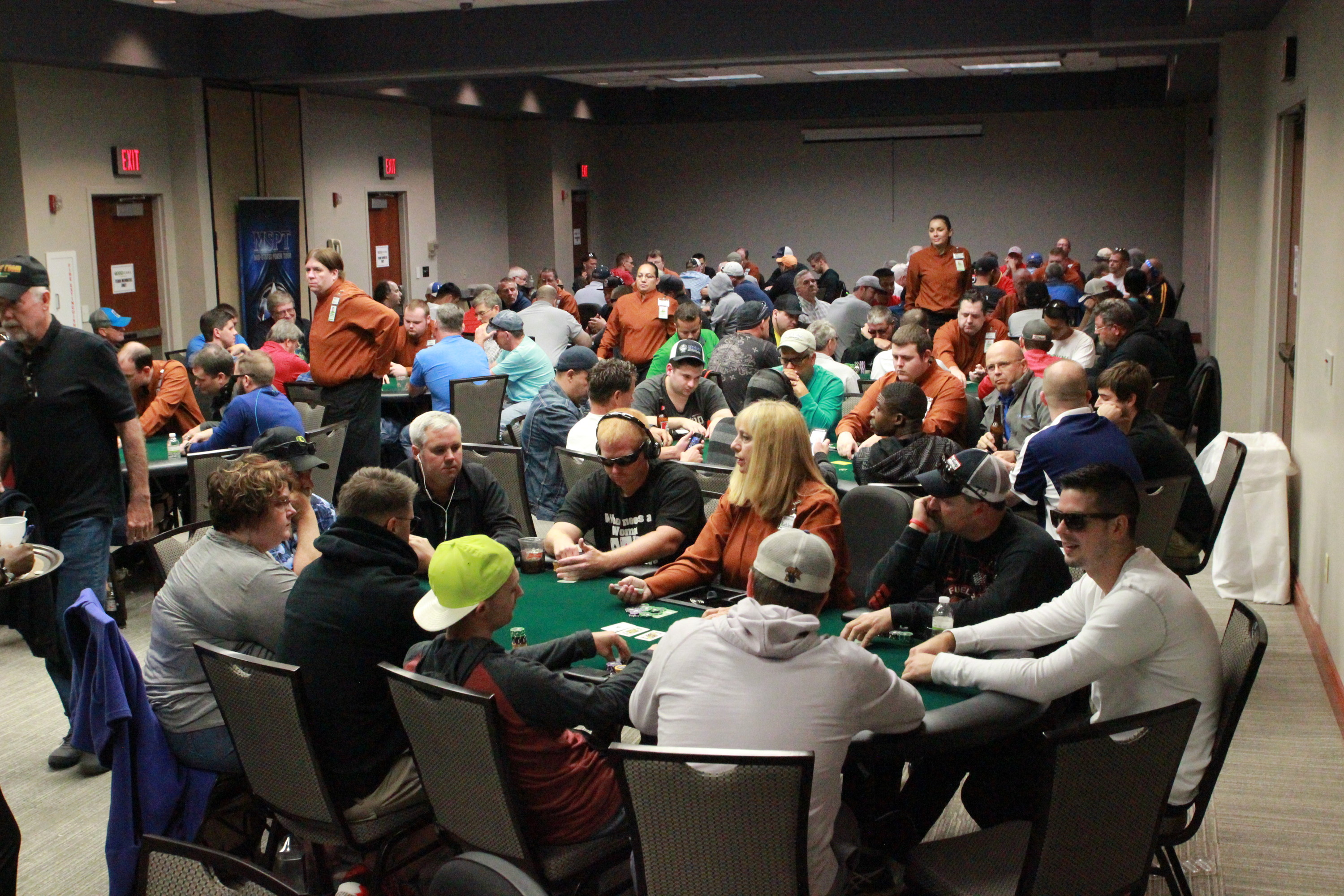No Limit Tournament Strategy
No Limit Hold’em Theory and Practice by David Sklansky and Ed Miller, (Rating 10/10) – Another great book that can help you in any big bet game and it also provides some great insight on how to handle some NLHE tournament specific situations such as a calling range versus a short stack or with what hands you need to push when you hold a. This guide will be relevant for $10+1 buy-in tournaments on Party Poker and up to the $30+3 games as well. At the $50+5 buy-in level, the tournaments tend to change in skill quite a bit and require more than just solid poker in order to win. This guide might be applicable for $5+1 single table. Texas Hold'em No Limit (NL) Strategy Although there are different formats of Texas Hold’em, Texas Hold’em No Limit is by far the most popular. This is because you can bet any amount at any time. As a result, you are always at risking of losing every single chip you have – or doubling up. Don’t limp into pots ever. And don’t call preflop three-bets unless you are trapping with an ultra. Texas Hold'em No Limit (NL) Strategy Although there are different formats of Texas Hold’em, Texas Hold’em No Limit is by far the most popular. This is because you can bet any amount at any time. As a result, you are always at risking of losing every single chip you have – or doubling up.
Rules of the Game
No Limit Hold’em (NLHE) is described as the Cadillac of Poker and it is indeed the most popular game in the world by a large amount and nothing will probably ever change that.
Even if mixed games are your passion and specialty, this game cannot be ignored for a variety of reasons. It is included in the Eight Game Mix which is a very popular mix in both tournaments and cash games. And big field NLHE often a part of major tournament series a low buy in and a high guarantee offer tremendous value even if it is not your specialty.
Basic Strategy
This site will not try and offer advice on how to beat $25/$50 six handed cash games or attempt to prepare you for High Roller events; that is out of our scope. But we will try and offer a few tips on how to navigate the NLHE round when included in mixed games.
The most important piece of advice is to be completely honest in regards to your relative NLHE skill level amongst the other players particularly in mixed game tournaments. If your NLHE game is weaker relative to the other games it would be a big mistake to play large pots against more skilled players when your edge in the other games is great.
If you ascertain you are at a disadvantage it is fine to adhere to a small ball strategy and also defend your big blind less even in when a defense is considered standard. It would also be acceptable to put in larger bets or raises to end a hand sooner rather than later. This last piece of advice is often frowned upon because it more or less ends the hand and often allows your opponent to only continue when you are beat. However, you can also play your big hands in a similar fashion and the odds are typically with you that they do not have you beat. Of course if your opponents are folding a lot this means you can also find bluffs, preferably with a blocker.
For example, suppose it is the NLHE round in a WSOP $1500 Eight Game tournament. You have AQ off suit in the small blind and are facing an open-raise from the button. An advanced NLHE player if they chose to re-raise would probably size it as such to get value by keeping dominated hands such as KQ, QJ, and lesser hands in their opponent’s range. However, if NLHE is not your game and you do not want to play a lot of big pots out-of-position you can either choose to just flat call or make a larger raise that will simply end the pot the vast majority of the time when stacks are not that deep. Note that you could also make this raise with AA or even as a bluff if stack sizes dictate that your opponent is not really in a position to just call your raise. It would not be completely wasting the value of AQ because it is conceivable you will get called by dominated hands anyway and your hand helps block AA, AK, AQ, and QQ.
Making larger than standard re-raises pre-flop will often get your opponent to fold and when he does you more than pay for the round of blinds and antes and move onto the next game. But also allows your opponent to make a big mistake by folding the best hand or getting it all in against one of your premium holdings.
Further Learning

No Limit Hold’em for Advanced Players by Matt Janda, (Rating 10/10) – This book is an outstanding resource on the game of NLHE and the principles covered will also make you a better player in any big bet variant.
No Limit Hold’em Theory and Practice by David Sklansky and Ed Miller, (Rating 10/10) – Another great book that can help you in any big bet game and it also provides some great insight on how to handle some NLHE tournament specific situations such as a calling range versus a short stack or with what hands you need to push when you hold a short stack.

Poker Strategy for No Limit Hold’em MTT’s
Multi table tournaments are one of the most lucrative ways to play poker. As seen on TV, players buy in for substantial amounts of dollars in hopes that they can grind their way to the final table where thousands, if not millions, of dollars can be won.
As great as these tournaments seem to be, what viewers or many newer MTT players do not seem to realize is the fact that these fields are generally pretty large, sometimes with well over 5,000 players, and that only the top 20% to 30% of the players are paid for their efforts. In case that does not stand out very clearly, 70% to 80% of those playing in these tournaments can play for several hours, if not days, only to walk away empty-handed.

Because of these large fields, it takes a different kind of strategy to do well in a MTT than one might employ in a cash game or even a single table tournament or sit n go. And to try to get those of you interested in playing in MTT’s on the right track, we have provided some tips and strategies that should help you get through some of the early stages of these tournaments.
MTT Strategy – Starting Hands/Position
Multi table tournaments are going to require a different kind of strategy then single table tournaments or cash games because of the fact that so few get paid. So the focus in the beginning needs to be survival to make it into the money. Sure, many of you may be thinking that the real focus should be on winning the tournament. But it is important to keep in mind that you will cash more times than you will win these tournaments and cashes are what keeps money coming into your account, thus allowing you to play the next tournament.
So, with the focus on making it into the money, the first step to this is by playing A-B-C poker. Meaning, you will want to raise when you have a hand, fold when you do not, and play hands according to position. There is, of course, room for the occasional bluff or steal but the blinds are so small at early stages in the tournament that it is virtually pointless to take needless risks. Here are some hands we would recommend playing while in the early and middle stages of the tournament:
Early Position: AA-KK, AK,
Middle Position: AA-JJ, AK-AJ, KQ-K10
Late Position: AA-88, AK-A9, KQ-K9, Connectors/Suited
What needs to be taken from this is that “tight is right” when choosing hands as this will allow players the opportunity to have easier decisions on later streets. Just remember that survival is key and that every time you try to play less than par hands or play out of position you make the decisions more difficult for yourself which in the end can risk your tournament life.
Pay Attention to Your Table – Not Your Surroundings
Tournaments can be very long and although it is easier to look around, read, listen to music, or browse the web, the bottom line is that it is very beneficial to you to pay attention to your opponents. You will be playing against these players for hours or days on end, so the more information you have on them the more chips you can attempt to save and/or accumulate. Be sure to pay attention whether you are in the hand or not and pay specific attention to betting habits, what cards your opponents play in what position, and what they show down. This is invaluable information all free, and all at your disposal.
Aside from paying attention to your opponents, be sure to pay attention to the tournament itself. Things like levels, antes, and average chips stacks are important things to know and can affect many of the decisions you make.
Patience is Key in MTT’s
Although this is important through all stages of the tournament and not just early stages, players will have a much harder time in the early stages because of the lack of action due to everyone playing tight and the blinds being so low. But what will make the biggest difference between you and someone who decides not to be as patient is that often times you will last much longer in tournaments.
There is no reason to play just because you’re bored and want some action. The hands will come and you will want to have all the chips possible when they do. Being impatient tends to lead to losing bits and pieces of your stack.
No Limit Tournament Strategy
MTT Bankroll Management
Although it may not seem like a player’s bankroll has a direct affect to how they approach and play a multi table tournament, the truth of the matter is, is that it can. If a player buys into a tournament with all the money that they have in their bankroll, they will be playing ‘scared’ poker which disables them from making rational decisions based on their opponents, their cards, and odds.

A good rule of thumb is for players to have from 20 to 40 times the amount of the buy-in in their bankroll. This will ensure that players can face a loss without substantial damage to their bankroll which should allow them to focus and play their “A” game. By playing in tournaments that are above your limits, you really are just placing a cap on yourself.
Texas Hold'em No Limit Tournament Strategy
To survive in the early stages of a multi table tournament, players need to ensure that they are playing basic and straightforward poker. By choosing the correct starting hands according to position, paying attention to the action at the table, and by being patient, players should expect to make it through the early stages of any multi table tournament and can then focus on employing strategies that will get them into the money and then hopefully to the final table.